Interesting discussions. All those traditional pictures in our heads how the ships are ought to look.
For the french frigates and ship of the lines it is well documentated to have had plenty of false windows, especially the side galleries, see M. Delacroix´s Commerce de Marseille. Very much as the Consti shows in the painting shown.
Even Steel mentions the false windows for the british but does not give hints, for what size or type of ship.
The models in NMM have mostely glazed windows, but this could be an artistic lisence: one wanted to impress the admirality or king.
For the Vic I am investigating already for quite some time. The classic mistake is to have a look at the "thing" in Portsmouth. The more I research, the less I believe that this is the state of Trafagar :-)
Interstingly Livesay gives a different color for the outer windows in his famous sketch of 1806.
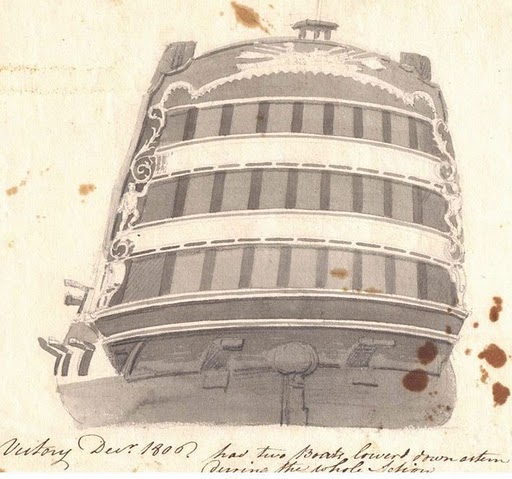
Also the Swaine painting only shows glas reflexes on the center windows of the side galleries. Also a hint on false windows?
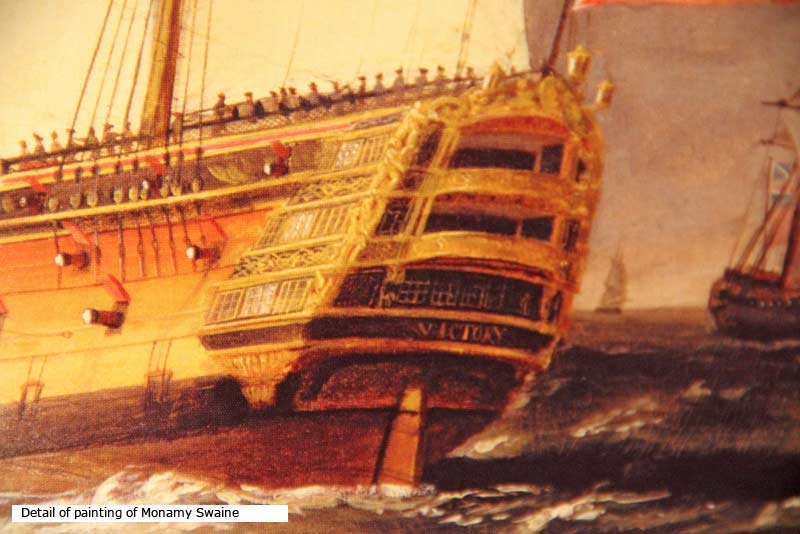
This lead me to do some tests on my model, with glazing and with fallse windows.
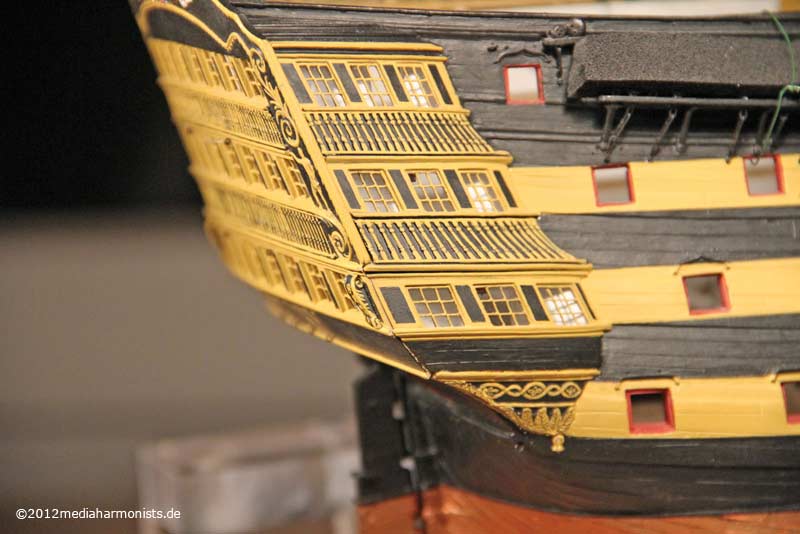

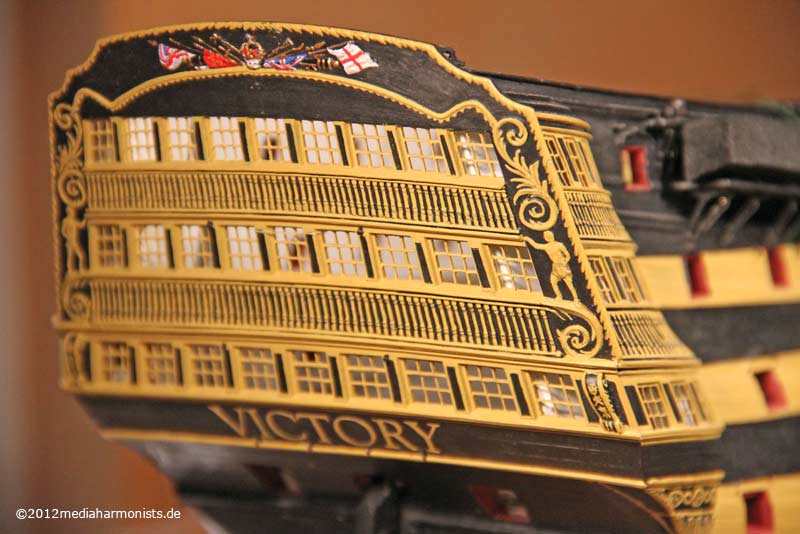
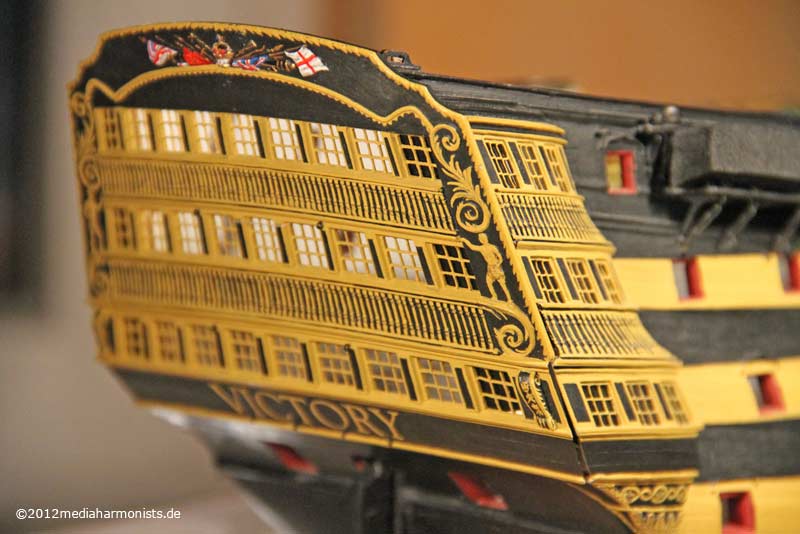
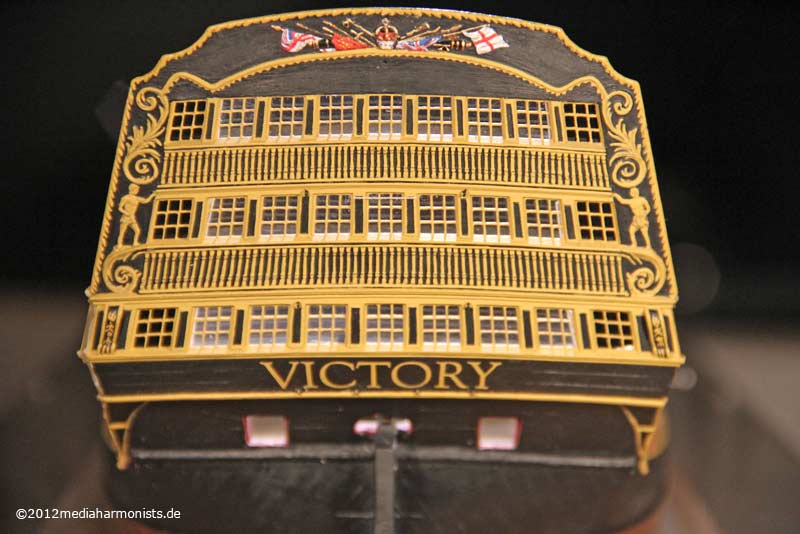
As for the discharges, it would work als for the upper galleries, especially, it this area hade fake windows, then the pipes could be even straight and be hidden behind a fake planking :-)
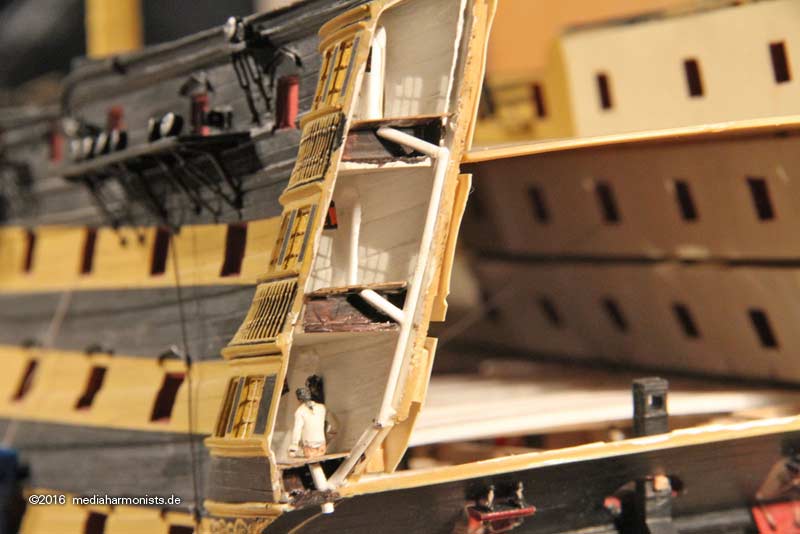
By the way, let me introduce you to Sir Archibald, being busy with his important businesses :-)
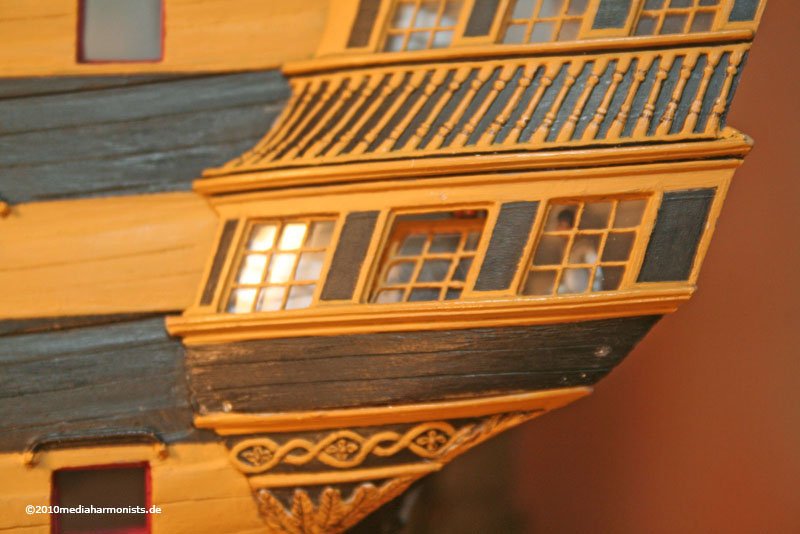
As for the nice horrible stripes around the bow, most of the painings were done much later, when this was already established fashin in the RN.
It was usualy believed that those were introduced in the 1814 with the introduction of the round bow. But then I found a drawing of Robert Dodd published in 1807 with those stripes and even Turner´s drawing are giving a faint hint to confirm this. Not to mention the missing entry port, the build barricades of fo´cstle and poop, missing side davits and the feather of Prince of Wales.
Fellow Victory traditionalists be brave, the changes of the color on the V. in P. was only a minor start ;-)
Cheers, Daniel